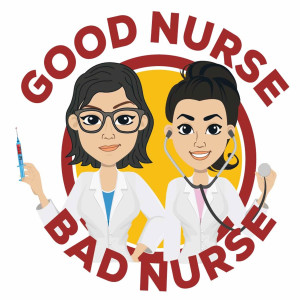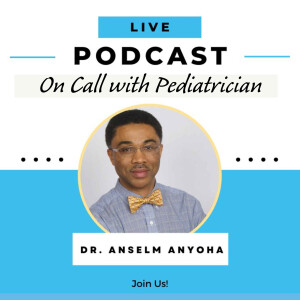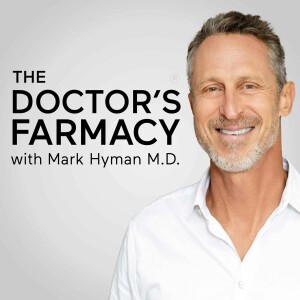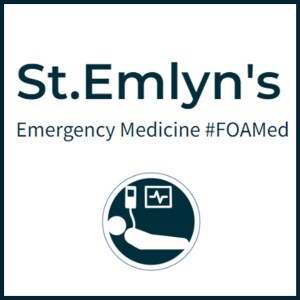The latest CAN is one of our brand-new 'revision editions' -- brief podcasts aimed at covering the essentials of critical appraisal for medical students and junior doctors preparing for exams.
With the help of Gregory Yates, an academic doctor based in Manchester, this episode introduces two core concepts: sensitivity and specificity. These are two ways of thinking about the accuracy of a diagnostic test. Knowing the sensitivity and specificity of an investigation will give you a decent idea of how it should be used in the emergency department.
Sensitivity (Sn) describes the chance that a test will be positive if your patient has the condition you're testing for. Some people call it the 'true positive rate' or alternatively the positivity in disease (PID) rate. If you need a hand remembering it, you can always remember that PID is a sensitive issue.
Meanwhile, specificity (Sp) considers the chance of a test being negative if the patient doesn't have the condition you're testing for. It's the 'true negative rate' or alternatively the negativity in health (NIH) rate. There are times when we particularly need a test to have a high sensitivity. This is generally when we want to be particularly confident that a test accurately identifies everyone with the relevant condition because we really don't want to miss it. We need a high sensitivity to rule out disease. (Sn-uff it out). At other times, we need to be confident that a patient with a positive test actually has the disease - for example, if the treatment is unpleasant or involves exposing patients to risk. In that case, we want a high specificity to rule in disease. (Sp-in it in).
In this CAN, we use D-Dimer as an example of a very sensitive investigation: it’s positive in nearly 100% of cases of venous thromboembolism. Specificity describes the likelihood that the test will be negative if your patient does not have the disease. We use HbA1c as an example of a highly specific investigation: it’s rarely used in the emergency department, but if it’s elevated, we can be almost certain that the patient is diabetic. HbA1c is almost never (
More Episodes
Ep 51 - Day One Round Up (SMACCUS)
 2015-06-25
2015-06-25
 5.2k
5.2k
Ep 50 - All in a day's work (SMACC 2015)
 2015-06-24
2015-06-24
 4.6k
4.6k
Ep 49 - SMACC Workshops Review and Pearls
 2015-06-24
2015-06-24
 4.5k
4.5k
Ep 48 - Intro to EM: The patient with back pain.
 2015-06-04
2015-06-04
 7.7k
7.7k
Ep 47 - Barbra Backus on Risk scores in Acute Coronary syndromes
 2015-05-22
2015-05-22
 589
589
Ep 46 - Intro to EM: The patient with asthma
 2015-05-06
2015-05-06
 6.1k
6.1k
Ep 45 - Top 10 trauma papers 2014-2015.
 2015-04-27
2015-04-27
 8.5k
8.5k
Ep 44 - Tim Draycott on Obstetric Trauma (LTC 2014)
 2015-04-18
2015-04-18
 4.1k
4.1k
Ep 43 - APLS 2015 updates for the management of the serious injured child
 2015-03-26
2015-03-26
 5.2k
5.2k
Ep 42 - Paediatric Major Trauma with Ross Fisher (LTC 2014)
 2015-03-22
2015-03-22
 4.7k
4.7k
Ep 41 - Is trauma an elite sport? with Tom Evens (LTC 2014)
 2015-03-15
2015-03-15
 4.3k
4.3k
Ep 40 - Opiate overdose in the ED
 2015-02-27
2015-02-27
 6.2k
6.2k
Ep 39 - Prof. Tim Harris on Shock Assessment (LTC 2014)
 2015-02-22
2015-02-22
 4.5k
4.5k
Ep 38 - New (or are they really new) Oral Anticoagulants and the Emergency Physician PART 2
 2015-02-10
2015-02-10
 566
566
Ep 37 - Karim Brohi at LTC (LTC 2014)
 2015-02-02
2015-02-02
 4.6k
4.6k
Ep 36 - The GoodSAM app with Mark Wilson (LTC 2014)
 2015-01-24
2015-01-24
 3.5k
3.5k
Ep 35 - New (or are they really new) Oral Anticoagulants and the Emergency Physician PART 1
 2015-01-18
2015-01-18
 6.8k
6.8k
Ep 34 - Intro to EM: Problems in Early Pregnancy
 2015-01-14
2015-01-14
 6.5k
6.5k
Ep 33 - Impact Brain Apnoea with Gareth Davies from London HEMS (LTC 2014)
 2015-01-06
2015-01-06
 7.0k
7.0k
Ep 32 - The Christmas review podcast 2014
 2014-12-23
2014-12-23
 2.9k
2.9k
Create your
podcast in
minutes
- Full-featured podcast site
- Unlimited storage and bandwidth
- Comprehensive podcast stats
- Distribute to Apple Podcasts, Spotify, and more
- Make money with your podcast
It is Free
You may also like

Good Nurse Bad Nurse


The Relaxback UK Show


On Call With Dr. Anselm Anyoha


The Peter Attia Drive


The Doctor’s Farmacy with Mark Hyman, M.D.

- Privacy Policy
- Cookie Policy
- Terms of Use
- Consent Preferences
- Copyright © 2015-2024 Podbean.com



 iOS
iOS Android
Android